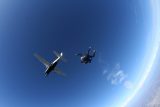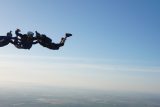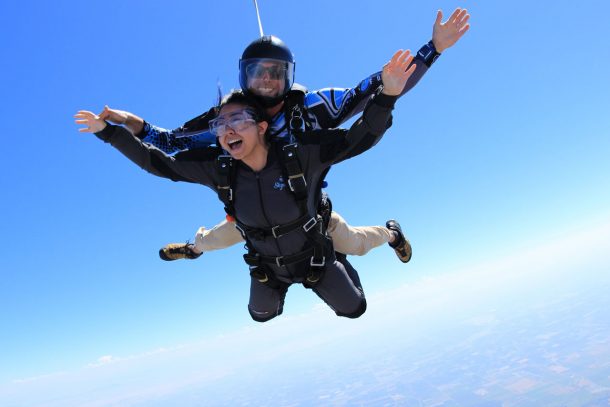The things we see in movies and on television take many liberties to tell an exciting story. For the sake of action and drama, technical accuracy is sidelined in favor of spectacle. Skydiving and skydivers are not alone in the way they get portrayed but are a fine example of this erosion of truth in the creative process. Also, without knowing any better, the uninitiated can easily be forgiven for assuming certain things about how parachuting works that are anything from a little removed to miles distant from the truth. Here are some of the most common myths about skydiving that are commonly believed…
1. Communication
There are umpteen examples of people talking to each other in freefall. This is lies. When you jump out of an airplane gravity pulls you towards the planet at around 120mph. The wind rushing past you is not deafening, but it is very much loud enough to make speaking to someone else – no matter how close – impossible. Skydivers communicate in freefall by using simple hand signals, but also by eye contact and body language. A crucial part of successful skydiving is by having a plan in place that everyone knows well and has practiced on the ground first.
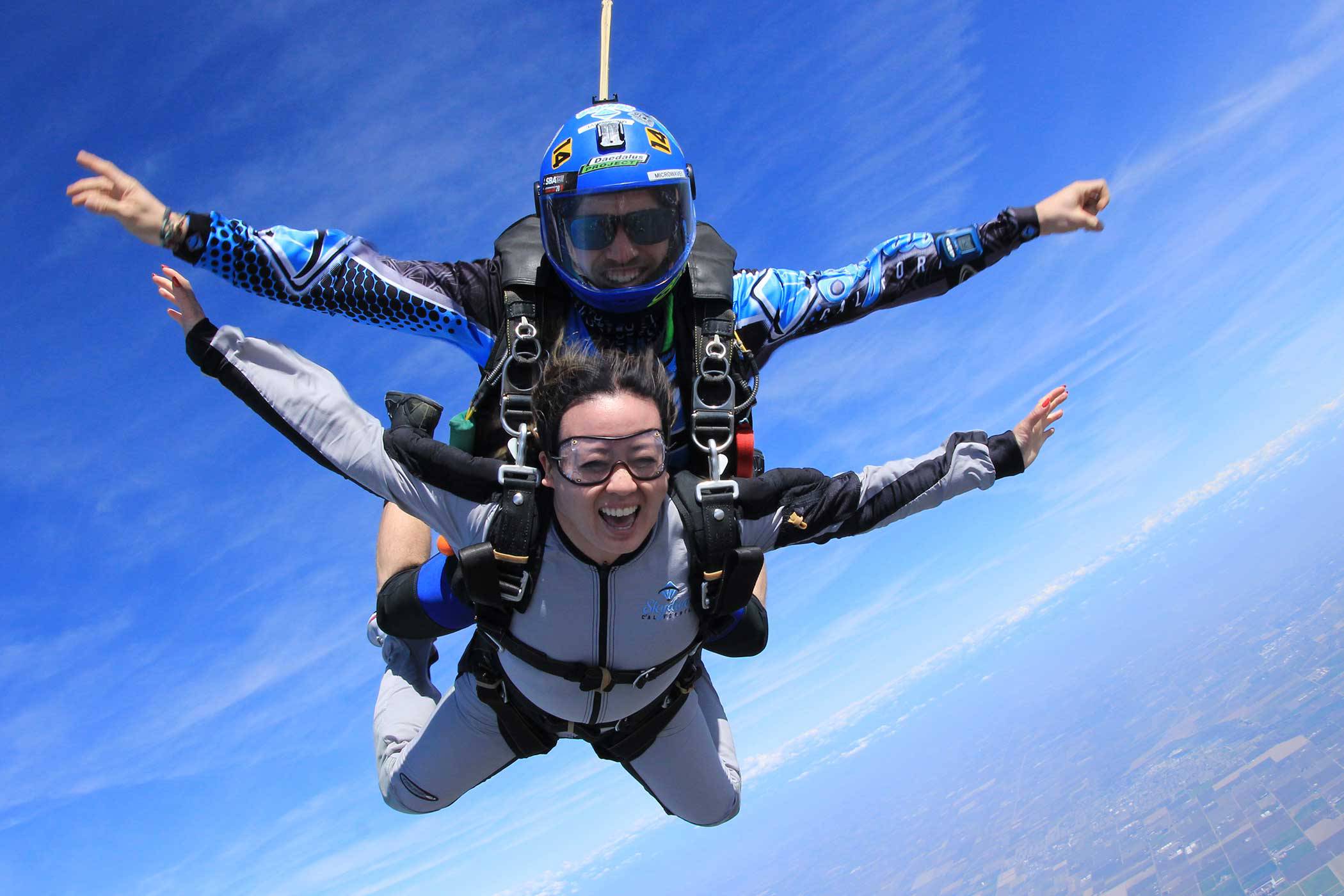
2. Deployment
When you deploy a parachute, you do not go flying upwards really fast. If you have ever seen video footage of a parachute deployment it is easy to think this is what happens to you, but it is simply an effect caused by the videographer continuing to fall away from a deploying canopy. Parachutes are very good at doing what they are supposed to do, and the deployment sequence happens in stages that decelerate the skydiver from terminal velocity (around 120mph) smoothly and gently. The reason it looks like this on video is that terminal velocity is really fast, and putting the brakes on by opening a parachute is a big reduction in vertical speed.
3. Tandems
Many people think that your very first skydiving experience needs to be a tandem jump. Tandem skydiving is by far the most common way people skydive for the first time, and it is a great way to jump for the first time without too many things to do other than enjoy what is happening to you. However, as part of the Accelerated Freefall Course (AFF) you are given the training to fly and land a parachute by yourself from jump number one. At the start, two instructors hold you on the way down – but you are very much skydiving yourself.
4. Landings
You definitely do not need to land in a big dusty pile. Modern parachutes are very well designed and efficient flying wings that can be controlled and flared to provide a soft landing. There is a little timing involved, and while plopping down in a big heap is entirely possible – it is far more likely to land on your feet as if hopping down from a single step. It is slightly trickier to land standing up when a student and instructor are harnessed together, so for tandem skydives, you slide gently on your bum to land.
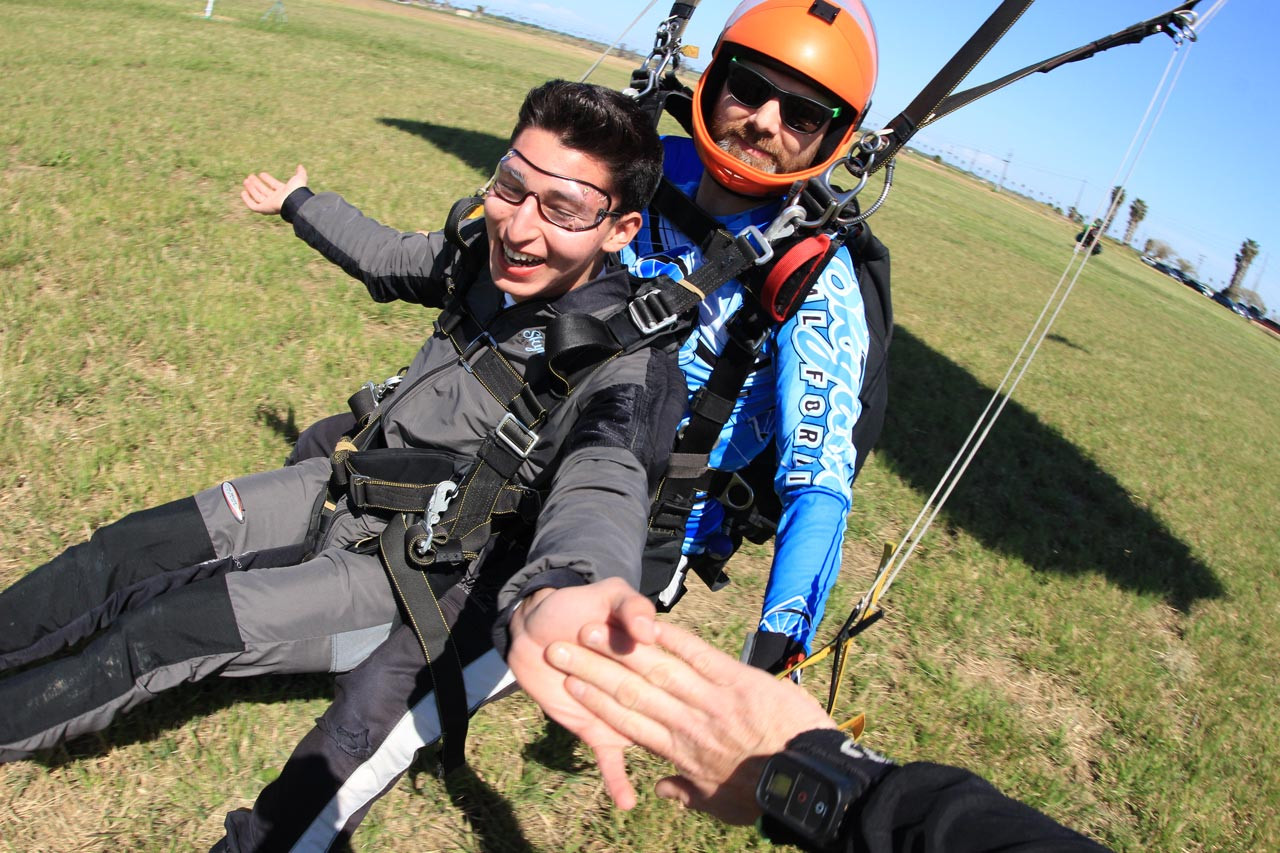
5. Lunacy
Skydivers are often portrayed as unhinged crazy people that pursue risky thrills, and again you can easily be forgiven for thinking that leaping from airplanes is a reckless stunt. The truth is actually the opposite. Skydiving is a sport for people who are good at understanding and managing risk, and once you get into it you will find that skydivers are very sensible and methodical people. People who are into skydiving come from anywhere and everywhere, with no real defining stereotype – just people brought together by something awesome.
These things merely scratch the surface of the incredible adventure skydiving is and can be. Everybody should try it once at the very least – but getting involved is even better. Not only will you find more than you thought – you might find much, much more. Schedule your visit today!

